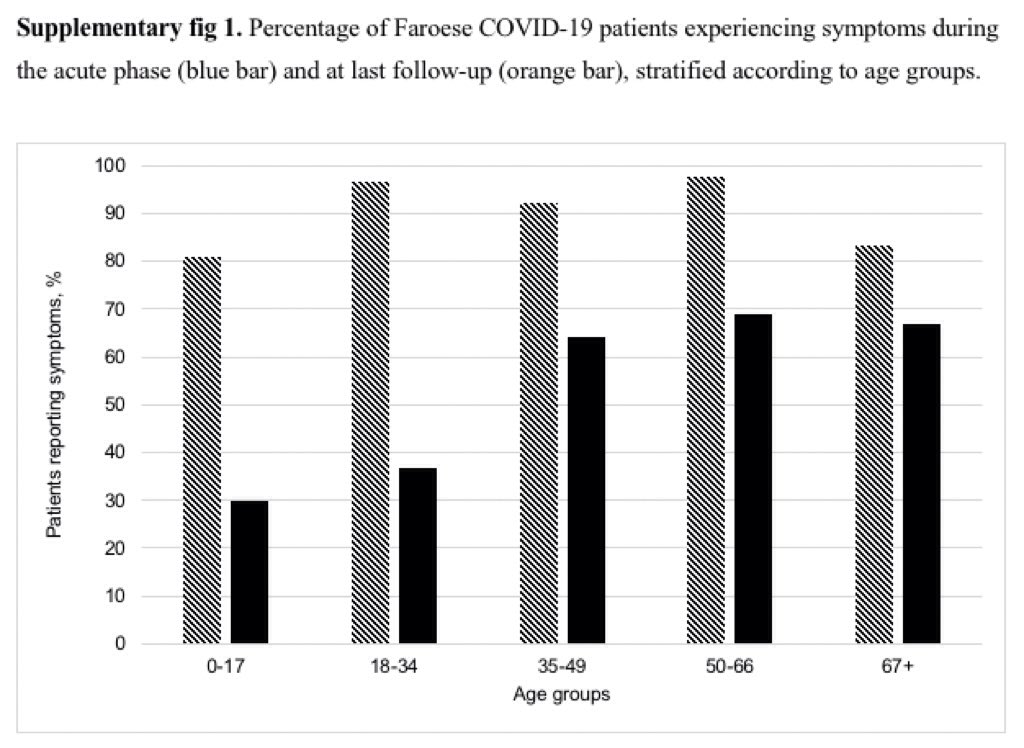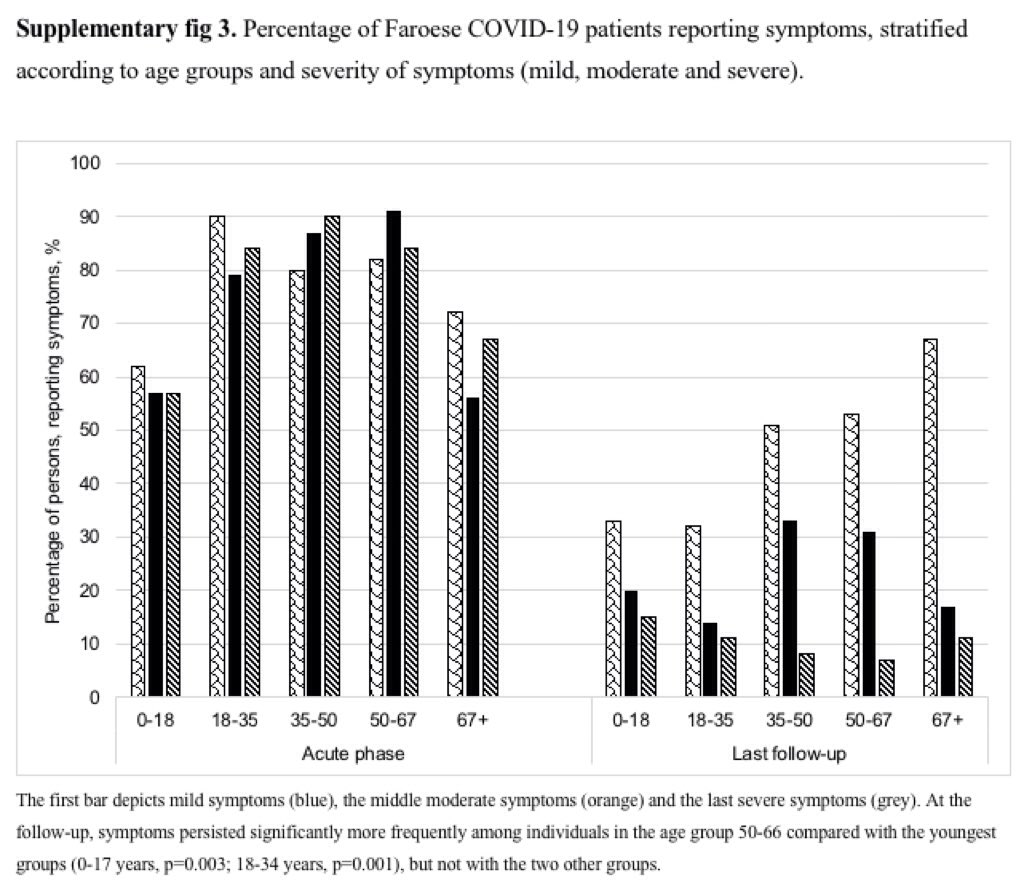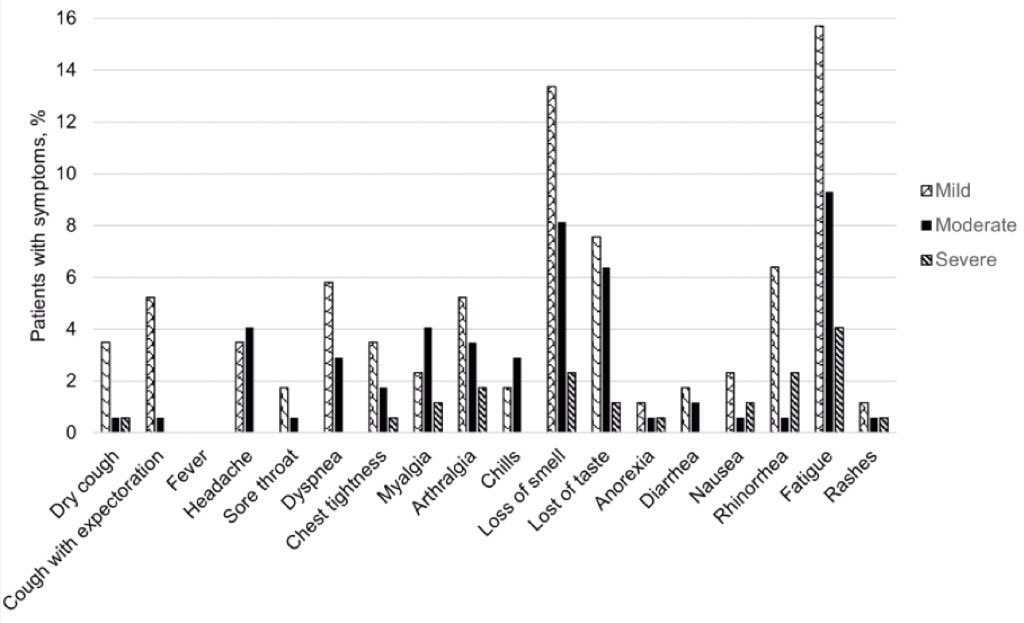
(1/9) #LongCovid is common. In this study of 180 Faroe Islanders (of whom only 8 were hospitalised), 53% had at least 1 symptom after an average of 4 months (minimum follow-up 45 days).
Fatigue, joint pain, and loss of smell and taste were most common.
academic.oup.com/cid/advance-ar…
Fatigue, joint pain, and loss of smell and taste were most common.
academic.oup.com/cid/advance-ar…

(2/9) All 187 people who tested positive for #COVID19 between 3 March and 22 April were invited to participate in this study, and 180 took part. Participants were followed up (by telephone) for 45-215 days (average: 125 days).
The average age was 39 years, and 54% were female.
The average age was 39 years, and 54% were female.
(3/9) In the initial phase of illness, 8 people (4.4%) were asymptomatic.
At the last assessment, just under half (47%) were symptom-free. One-third (33.3%; n=60) had 1 or 2 symptoms, and 19.4% (n=35) had >=3 symptoms.
Two asymptomatic people subsequently reported symptoms.
At the last assessment, just under half (47%) were symptom-free. One-third (33.3%; n=60) had 1 or 2 symptoms, and 19.4% (n=35) had >=3 symptoms.
Two asymptomatic people subsequently reported symptoms.

(4/9) Of the persistent symptoms reported by participants, the most common were fatigue, loss of smell and taste, and joint pain.
(5/9) Of the 172 people that had symptoms during the initial (acute) phase of illness, 93 (54%) reported at least one persistent symptom at the last assessment.
The more symptoms people had in the initial phase, the more likely they were to have #LongCovid.
The more symptoms people had in the initial phase, the more likely they were to have #LongCovid.
(6/9) During the initial phase of illness, people aged <=17 years or >=67 years were slightly less likely to have symptoms than those aged 18-66, although proportions were similar across age groups.
In contrast, persistent symptoms were more likely in those aged >=35 years.

In contrast, persistent symptoms were more likely in those aged >=35 years.


(7/9) There was no difference in the prevalence or severity of symptoms by sex, smoking status, or pre-existing medical conditions.
(8/9) A strength of this study is that it is likely to be fairly representative.
Testing was extensive in the Faroe Islands, and few cases are likely to have been missed. It is also a study of mostly mild cases. Only 8 people (4%) had been hospitalised.
Testing was extensive in the Faroe Islands, and few cases are likely to have been missed. It is also a study of mostly mild cases. Only 8 people (4%) had been hospitalised.
(9/9) This study shows that #LongCovid is common, and that it may take months for symptoms to resolve.
53% had symptoms after at least 45 days of follow-up (average follow-up: 4 months).
About 13% experienced fatigue which they described as moderate or severe.
53% had symptoms after at least 45 days of follow-up (average follow-up: 4 months).
About 13% experienced fatigue which they described as moderate or severe.

One for you, @Dr2NisreenAlwan.
• • •
Missing some Tweet in this thread? You can try to
force a refresh








